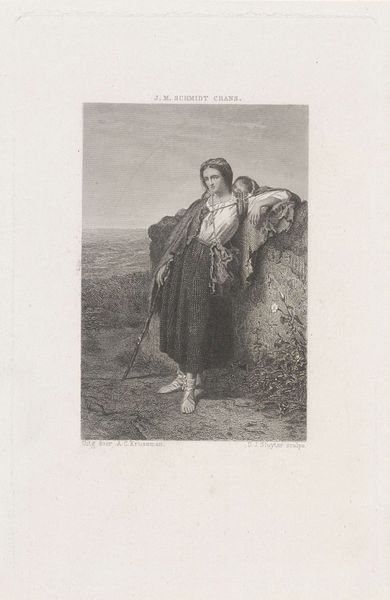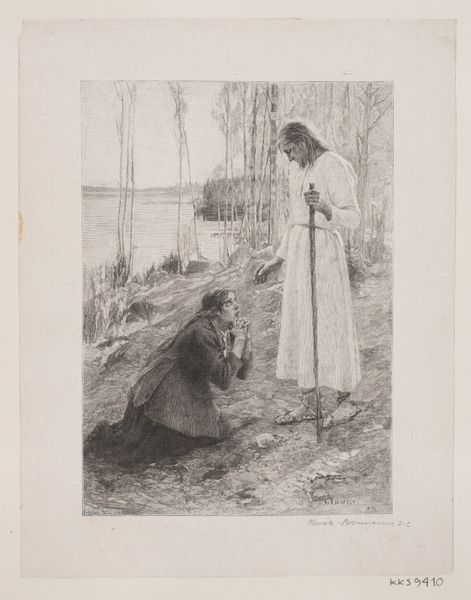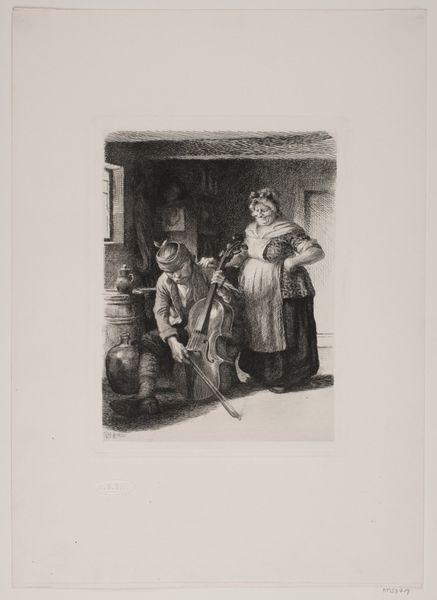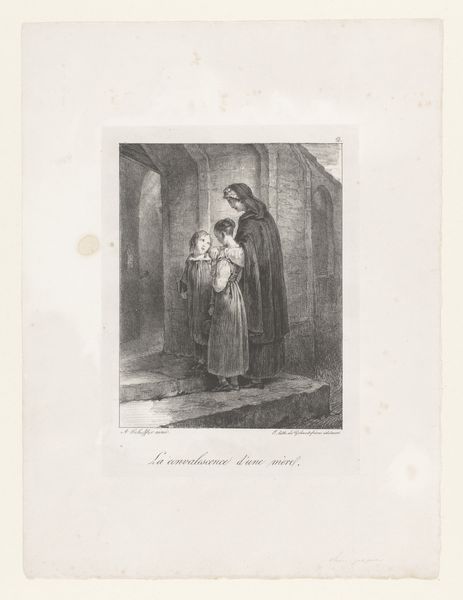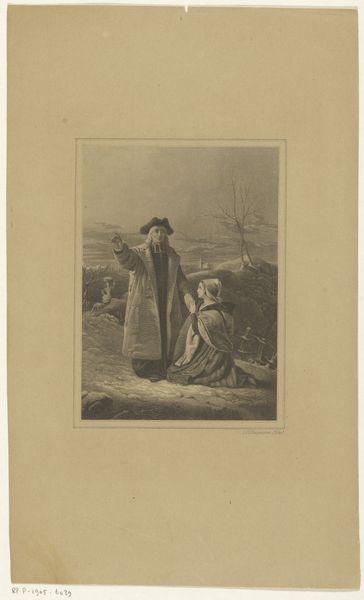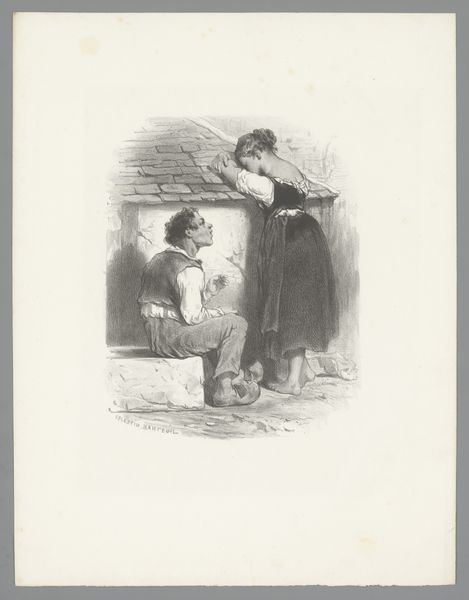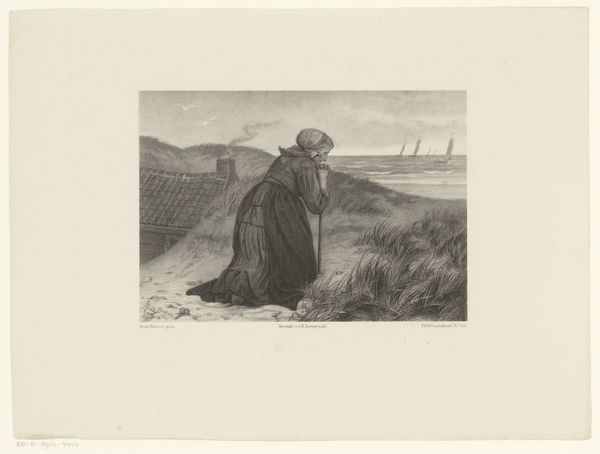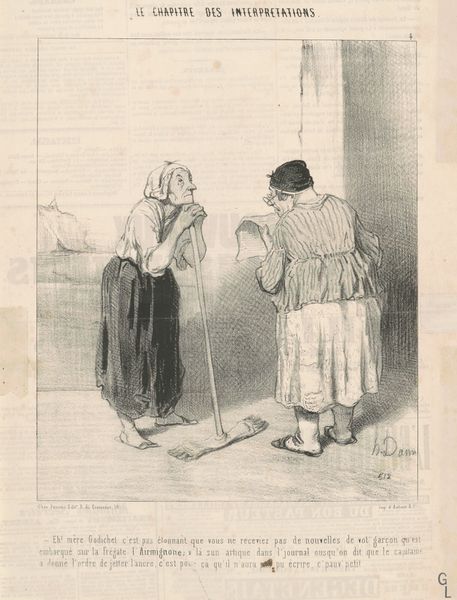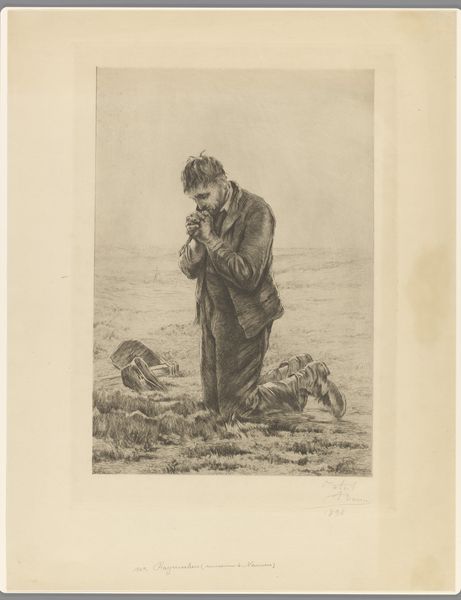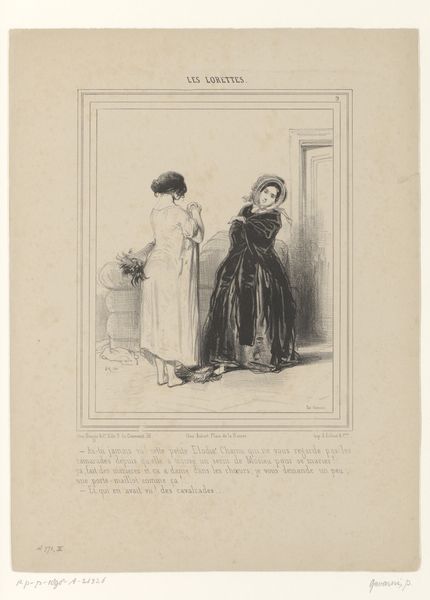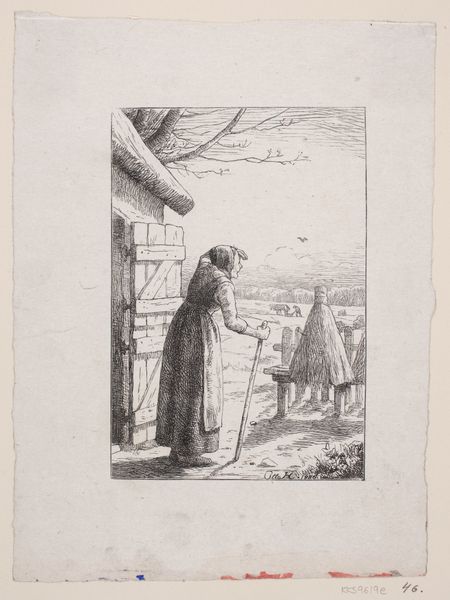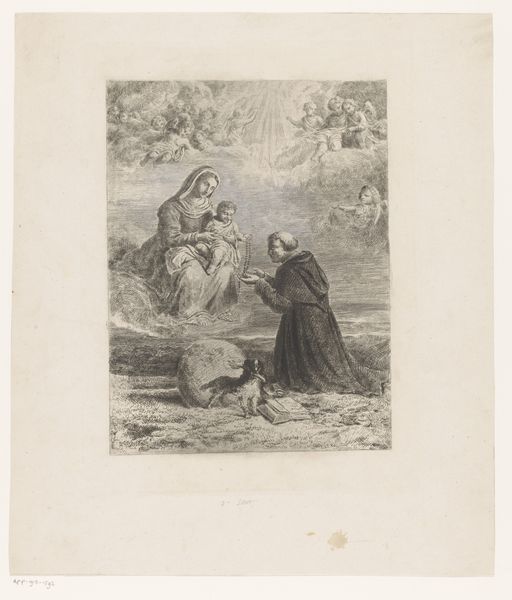
print, etching
#
print photography
#
narrative-art
# print
#
etching
#
landscape
#
figuration
#
genre-painting
#
realism
Dimensions: height 241 mm, width 166 mm
Copyright: Rijks Museum: Open Domain
Curator: This print is called "Landscape with a Blind Old Woman and a Young Girl," created in 1882 by Charles Courtry. It's an etching currently held in the Rijksmuseum. Editor: It strikes me immediately as quite somber. The stark contrasts and muted tones amplify a sense of vulnerability in the figures. What details can you share regarding its creation? Curator: Courtry was a Realist, and you see that clearly here. It's a print, but the etching lines give it the feel of a charcoal drawing. Notice the attention to detail, especially in the textures of the clothing and the rendering of the landscape. The figures are rendered with precision; it’s interesting that it emphasizes the societal challenges faced by the vulnerable in this era, particularly aged women dependent on children for support. Editor: Yes, the emphasis on their clothing indicates the materials and making here. I'm also wondering about the socioeconomic context influencing Courty's choice of subject matter and how the accessibility of printmaking allowed the potential audience to broaden beyond the wealthy elite. Can we imagine prints functioning as a type of social critique in 19th-century France? Curator: Absolutely. The print's reproduction allowed it to circulate widely, bringing its narrative to diverse audiences. The positioning of the old woman and the young girl also creates an interplay between dependency and care, highlighting the roles women often occupied and the societal expectations placed upon them. This raises the intersectional issues around gender, age, and class. Editor: Considering those conditions, it seems Courtry skillfully employs the print medium to expose the lives of the disenfranchised. The figures appear caught between hope and resignation—a testament to his engagement with realism's potential to instigate empathy and social reform. And maybe prompt an emotional, potentially political, response from viewers. Curator: The piece provides a compelling look at society at that time. It provokes us to engage with themes related to class, vulnerability, and societal expectations in art, while demonstrating art’s capacity to catalyze conversations about power and social change. Editor: Exactly. It makes you appreciate the complex relationship between material, making, and representation—and how art becomes not just an object, but a historical record imbued with socio-political meaning.
Comments
No comments
Be the first to comment and join the conversation on the ultimate creative platform.
